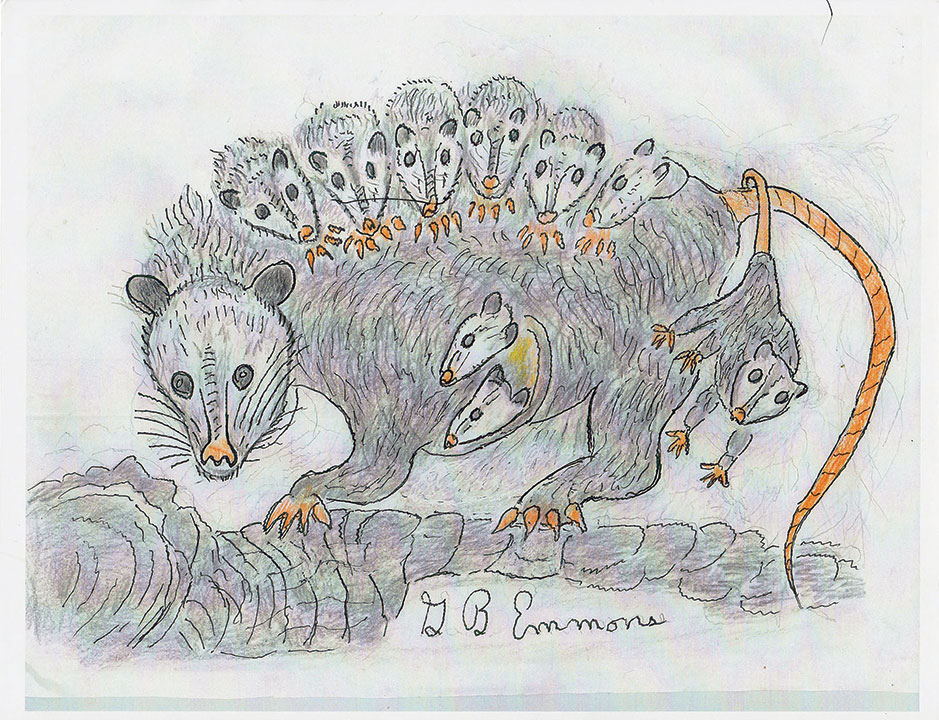Over 70 million years ago, dinosaurs roamed the entire Earth. Although now extinct, they once shared the same land with North America’s only marsupial, the opossum. The word opossum comes from the Native American word “apasum”, meaning white-faced animal. About the size of a full-grown cat, the opossum is even more adept at tree climbing. It has sharp claws on each foot with additional opposing toes on its back feet to hold onto things, just as a person’s thumb can. The tracks in the snow look just like a humans, separated by dragging tail marks.
As a marsupial, scientists also classify the opossum as a “pouched“ mammal whose young are born after only a two-week gestation period. The pink embryonic infants are so small they can fit in a teaspoon. They are called joeys, and usually eight or nine must climb onto their hind legs into the mother’s pouch called a “marsupium” to feed on their mother’s milk. They grow until the pouch becomes full and then they move out to ride on the mother’s back, as illustrated, until old enough to go out on their own.
The opossum has what is known as a “prehensile” pink, scaly tail adapted to wrapping around and grasping limbs of a tree. As they walk along a branch or ledge, they can also wave their tail from side to side to keep balance like the high wire circus Flying Wallenda performers use a long pole on either side as a sensitive indicator.
Opossums only live to be about two years old because they have many enemies including owls, foxes, coyotes, snapping turtles, and humans in automobiles. They are primarily nocturnal, not usually seen. When meeting a predator, they growl, hiss, and show their teeth to scare it away. But instead of fighting, they go completely limp and fall on one side while the tongue hangs out to look dead. A dog, for instance, cannot tell if it is alive or not, and a opossum can hold perfectly still for up to one hour.
The opossum has fifty teeth, more than any other animal, and will eat almost anything. They like snails, worms, eggs, frogs, and snakes. They can survive even a bite from a rattlesnake. But its teeth permit them to effectively eat many dubious insects, such as hundreds of ticks in one night. Their proficiency at smelling out garbage pails or dead animal carrion by the side of the road gives them a distinct odor, but earns them the title of nature’s little sanitation engineer.
The opossum’s nearest cousins of distinction live halfway around the world. In Australia there is the kangaroo, the cute koala looking like a teddy bear, and the numbat that similarly eats thousands of termites. And there is the Tanzanian devil that frightens humans with its terrifying screams at night.
The Marsupials, like the opossum, are clearly marvels of environmental adaptation to the changing globe, not unlike all living species on this planet. There is some semblance to the historic ascent of man, giving us perhaps more cause to appreciate our own environmental awareness.
By George B. Emmons
